Duluth’s Point of Rocks
The main personality split in Duluth occurs about where an interfering spine of rocks comes down from the hill to Superior Street just a few blocks west of midtown. West of this point of rocks Duluth is politically left, east of it it is politically right. But there is a certain uniting force in cold weather, of which Duluth has its share.
–From “Duluth,” an essay by Arthur W. Baum
in the April 16, 1949, Saturday Evening Post
The Peerless Auto Body Fire post on PDD sparked some discussion of the former Peerless location near Point of Rocks, which led to some interest in the history of Point of Rocks.
So, here we go …
From Zenith: A Postcard Perspective of Historic Duluth, by Tony Dierckins:
Since 1887 Duluthians have been chipping away at Point of Rocks, a giant rock outcropping near Thirteenth Avenue West and Superior Street.
Early attempts to remove the stone were spurred both by safety concerns and in order to make Superior Street straight. Shortly after the first blast in 1887, a huge boulder narrowly missed a man on horseback. In 1924 a movement grew to remove the natural landmark after 100,000 tons of rock fell onto Superior Street (another 100,000 tons fell in 1931 after heavy rains).
Duluthians found a use for the Point: both painted and handbill advertisements found their way onto the stone, as the postcards at left attest. In 1919, city leaders decided to turn Point of Rocks into a work of art. They brought in Mount Rushmore sculptor Gutzon Borglum to blast the rock into the form of the city’s namesake, Daniel Greysolon Sieur du Lhut. But Borglum found the stone too hard to carve and refused the job. (A bronze statue of du Lhut by famed sculptor Jacque Lipschitz stands in UMD’s Ordean Court.) Despite blasting and plans for public art, Point of Rocks remains-albeit smaller-and Superior Street still bows around it.
Here’s an old postcard view:
Below is a modern-day shot that includes (I’m pretty sure) the same rock. (It’s hard to tell, the area has been blasted so many times over the years.)
Here’s a story from the Feb. 15, 1902, Duluth News Tribune:
And here’s two photos from the X-Communication archives of the houses that made up the Little Italy neighborhood at Point of Rocks known as “The Glenn,” circa 1887.
Quoting Tony Dierckins:
Duluth’s Southern Italians, many of whom worked the railroad yards and coal docks, settled below Point of Rocks in an area also known as the Glenn. Prior to the Italians, this had been a French settlement. Most of the homes, built not along streets but on the hillside tucked within the rocks, were little more than shanties.
The ramshackle housing of the Glenn was dismantled and its streets were realigned. Ruins of foundations can still be found. The ruins of Duluth’s first water reservoir, which operated from 1883 to 1899, can still be seen rising from the hill above First Street between Tenth and Eleventh avenues west.
An article on street improvements in the Oct. 28, 1888 Duluth News Tribune notes:
Down by the point of rocks one may see the really colossal work. When a mountain gets in the way of a Duluth street it is hard on the mountain. The rock cut on West Michigan Street is well worth seeing, but the street that will result will be prettier to look at. They can no longer compare Duluth to a pair of saddlebags.
In the 1890s, Point of Rocks was mined for silver by the Duluth Silver and Copper Mining Co. They blasted a 300-foot tunnel into the rocks, spending $200,000 to extract $70,000 worth of silver.
In the early 1900s, the city crushed rock there for building materials. Here’s a modern photo from the top of what clearly appears to be an old quarry.
In 1998, boulders fell from Point of Rocks onto the sidewalk at Mesaba Avenue. An excavation company was later brought in to ignite explosives and remove several giant chunks of rock deemed hazardous.
Recommended Links:
Leave a Comment
Only registered members can post a comment , Login / Register Here


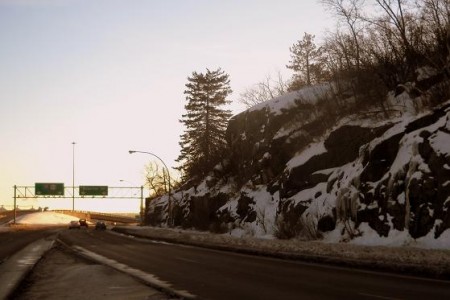
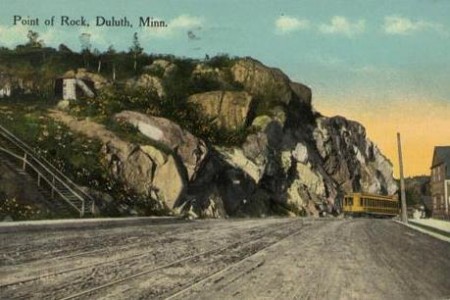
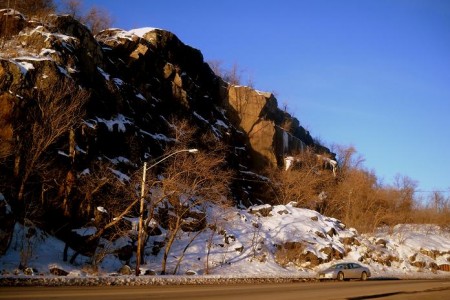

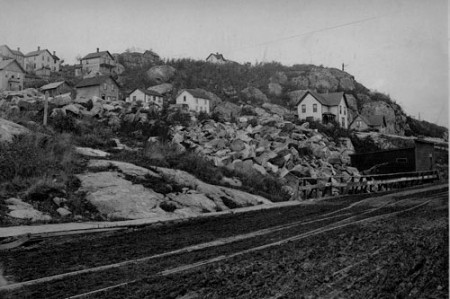
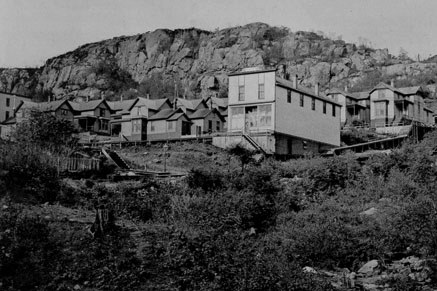
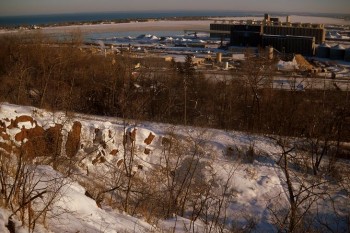
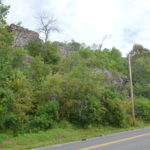
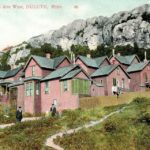
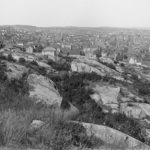
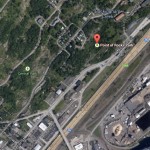








46 Comments
tom
about 14 years agoPaul Lundgren
about 14 years agors
about 14 years agoPaul Lundgren
about 14 years agosamh
about 14 years agoDave P
about 14 years agoCory
about 14 years agoDave P
about 14 years agoPaul Lundgren
about 14 years agoPaul Lundgren
about 14 years agosamh
about 14 years agoyear of glad
about 14 years agoPaul Lundgren
about 14 years agoyear of glad
about 14 years agoPaul Lundgren
about 14 years agoSpy1
about 14 years agoPaul Lundgren
about 14 years agoPaul Lundgren
about 14 years agoPaul Lundgren
about 14 years agoPaul Lundgren
about 14 years agowildgoose
about 14 years agoSlapShot
about 14 years agoPaul Lundgren
about 14 years agoPaul Lundgren
about 14 years agoClaire
about 14 years agoBad Cat!
about 14 years agoRick Aylsworth
about 14 years agoRacist Heir
about 14 years agoPaul Lundgren
about 14 years agoPaul Lundgren
about 13 years agoDavid
about 13 years agoPaul Lundgren
about 13 years agoPaul Lundgren
about 13 years agoadam
about 13 years agoPaul Lundgren
about 13 years agoPaul Lundgren
about 13 years agoPaul Lundgren
about 13 years agoPaul Lundgren
about 13 years agoPaul Lundgren
about 13 years agoPaul Lundgren
about 13 years agoPaul Lundgren
about 13 years agoPaul Lundgren
about 12 years agowildgoose
about 12 years agowildgoose
about 12 years agoPaul Lundgren
about 12 years agoKathie
about 7 years ago